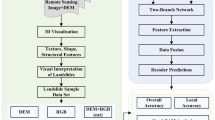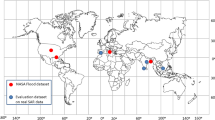Abstract
Data aggregation is a crucial method to relieve the energy consumption in wireless sensor networks (WSNs). However, how to perform data aggregation while preserving data fidelity and confidentiality is a challenging research task. Since many existing aggregation algorithms have large communication and computation overheads, this paper integrates rough set theory with an improved convolutional neural network, and proposes a novel information aggregation algorithm for wireless sensor network. Firstly, a feature extraction model is designed in our proposed algorithm and then trained in Sink node, where the rough set theory is adopted to effectively simplify information and cut down the tagged dimension. Once these data features from granular deep network are extracted by the cluster nodes, they will be sent to the Sink node by cluster heads, so as to reduce the quantity of data transmission and extend the network lifetime. Qualitative and quantitative simulation results show that compared with existing data aggregation algorithms, the energy consumption of our proposed granular CNN model can decrease obviously and the accuracy of the data aggregation can be effectively improved.




Similar content being viewed by others
References
Alam F, Mehmood R, Katib I et al (2016) Analysis of eight data mining algorithms for smarter internet of things (IoT). Procedia Comput Sci 98:437–442
Audebert N, Saux BL, Lefevre S et al (2017) Fusion of heterogeneous data in convolutional networks for urban semantic labeling (Invited Paper). In: Urban Remote Sensing Joint Event
Cattaneo G (2011) An investigation about rough set theory: some foundational and mathematical aspects. Fundam Inform 2011:197–221
Hiraki K, Inaba M, Tezuka H et al (2016) All-IP-Ethernet architecture for real-time sensor-fusion processing. Proc SPIE 9720:9200D
Khorasani F, Naji HR (2015) Energy efficient data aggregation in wireless sensor networks using neural networks. Int J Sensor Netw 24(1):26–42
Kumar S, Atri S, Mandoria HL (2009) A combined classifier to detect landmines using rough set theory and hebb net learning & fuzzy filter as neural networks. In: International Conference on Signal Processing Systems. IEEE Computer Society, pp 423–427
Lee S, Bakr MA (2017) An optimal data fusion for distributed multisensor systems: covariance extension method. In: International Conference on Ubiquitous Information Management and Communication
Li C, Xie X, Huang Y et al (2015) Distributed data mining based on deep neural network for wireless sensor network. Int J Distrib Sensor Netw 11(7):157453
Liu Y, Zeng Q, Wang Y et al (2015) Energy-efficient data fusion technique and applications in wireless sensor networks. J Sens 2015:1–2
Makki SK, Stangl M, Pissinou N et al (2013) Energy consumption in wireless sensor networks using data fusion assurance. Int J Wirel Mob Netw 5(2):47–58
Ordonez FJ, Roggen D (2016) Deep convolutional and LSTM recurrent neural networks for multimodal wearable activity recognition. Sensors 16(1):115
Pan H, Li TH (2013) Research on the data fusion of wireless sensor network based on credibility. Appl Mech Mater 341:1113–1115
Song ZY, Zhang GY, Su YQ et al (2014) One fusion algorithm of equipment fault prediction based on rough set theory and grey model. Comput Inf Technol 687:1377–1379
Tong C, Li J, Zhu F et al (2017) A convolutional neural network based method for event classification in event-driven multi-sensor network. Comput Electr Eng 60:90–99
Yang Z, Chen MR, Wu W et al (2014) Algorithm for wireless sensor network data fusion based on radial basis function neural networks. Appl Mech Mater 577:873–878
Zhai X, Jing H, Vladimirova T et al (2014) Multi-sensor data fusion in wireless sensor networks for planetary exploration. Adapt Hardw Syst 50:188–195
Zhang P, Thomas T, Zhuo T et al (2017) Object coding based video authentication for privacy protection in immersive communication. J Ambient Intell Humanized Comput 8(6):871–884
Acknowledgements
This work was financially supported by the Major Science and Technology Program of Shanxi Province, China (Grant no. 20121101004), the National Natural Science Foundation of China (Grant no. 61603266).
Author information
Authors and Affiliations
Corresponding author
Additional information
Publisher’s Note
Springer Nature remains neutral with regard to jurisdictional claims in published maps and institutional affiliations.
Rights and permissions
About this article
Cite this article
Cao, J., Zhang, X., Zhang, C. et al. Improved convolutional neural network combined with rough set theory for data aggregation algorithm. J Ambient Intell Human Comput 11, 647–654 (2020). https://doi.org/10.1007/s12652-018-1068-9
Received:
Accepted:
Published:
Issue Date:
DOI: https://doi.org/10.1007/s12652-018-1068-9




